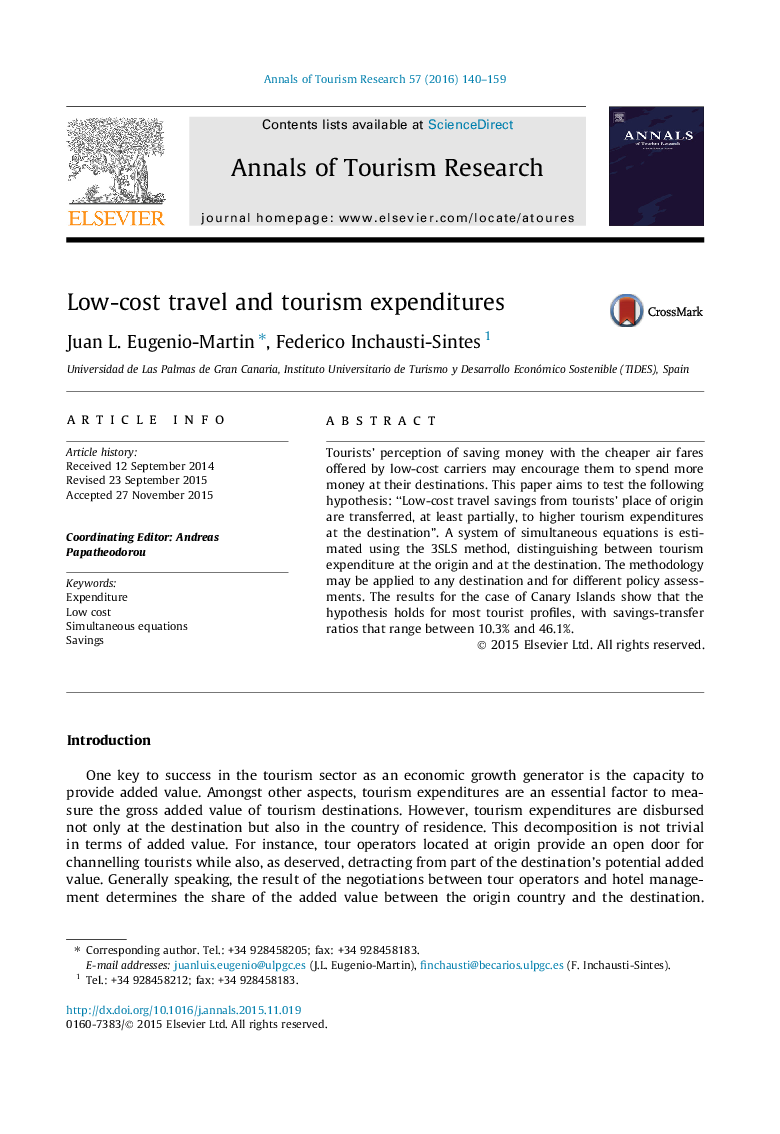| Article ID | Journal | Published Year | Pages | File Type |
|---|---|---|---|---|
| 7416606 | Annals of Tourism Research | 2016 | 20 Pages |
Abstract
Tourists' perception of saving money with the cheaper air fares offered by low-cost carriers may encourage them to spend more money at their destinations. This paper aims to test the following hypothesis: “Low-cost travel savings from tourists' place of origin are transferred, at least partially, to higher tourism expenditures at the destination”. A system of simultaneous equations is estimated using the 3SLS method, distinguishing between tourism expenditure at the origin and at the destination. The methodology may be applied to any destination and for different policy assessments. The results for the case of Canary Islands show that the hypothesis holds for most tourist profiles, with savings-transfer ratios that range between 10.3% and 46.1%.
Related Topics
Social Sciences and Humanities
Business, Management and Accounting
Tourism, Leisure and Hospitality Management
Authors
Juan L. Eugenio-Martin, Federico Inchausti-Sintes,
